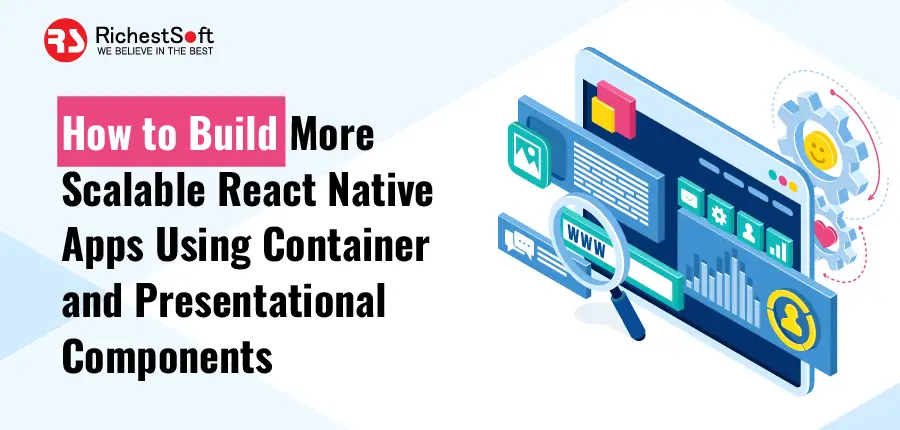Are you considering the creation of a mobile app? Are you inspired by the ideas of the successful app entrepreneurs out there? In the course of the post today, we will break down the whole process of mobile app development in comprehensive steps.
However, before delving into the steps directly, we will talk about the most important considerations that you have to make before you get on with the process.
The mobile app development sites are almost ubiquitous. So:
- You can either take help of one of these mobile app development programs to build your app
- Or, hire one of the credentialed app developers out there to get the job done
Why Should you Hire Android App Development Company?
The mobile app development market is growing at an exponential rate. The importance of hiring a qualified android app development company is growing simultaneously as well. The question is why is it so important to hire these developers in spite of our access to the DIY mobile app development programs? We have got the answer below.
You may think that the DIY mobile marketing apps will make it easier for you to make your foray in this market. However, you need to remember that they will not help you earn visibility in the highly competitive mobile app market. There is no point of just creating the app. You have to be visible as well. Here is where the nuanced expertise of a developer helps.
10 Steps to Create a Successful Mobile App
Creation of a successful mobile app is not only about getting the technical details right. A qualified developer starts work only after:
- Examining the nature of the business
- Their expectations from the app
- Drawing a parallel between the expectations and possibilities
- Discussing the Same
- Finally starting work after objectives, possibilities and limitations are clearly spelt out
Step 1: What are the Objectives of your App?
This is the time to get your pen and paper out. Defining the objectives does not only imply spelling out the basic purpose of the app. Here are a few queries that you need to have answers to:
- What do you want the app to do?
- Is there a unique problem which you have set out to resolve with this app?
- How can you make this app appealing to the users?
- Which features would you need to serve the basic functions and make your app stand out from the rest?
If you are starting a food app, for example, what will you want this app to do? Should users be able to order food online through your app? But there are many apps doing this. How is your app going to be different?
Are you offering low-cost services? Who does your app target? Regular foodies? Do you look forward to collaborating with corporate canteens as well? Do you have better hygiene guarantee in the offing?
Step 2: Deciding on Mobile Platforms and Revenue Model
There are several factors that determine the choice of the mobile platform:
Device support
Mobile Coverage
Hardware Performance
Battery Life
Deciding on the Revenue Model is another important step. If you are starting your app without deciding on the revenue model, then you are basically missing out on a large part of it. Here are the Direct Revenue Models that you should be aware of:
Subscription Model
In-app Purchases
Premium
Advertising
Pay Per Download
Step 3: What kind of app would you like to develop?
There are three main types of app that you can work on—the Native app, the Web app and the Hybrid App. The best mobile app development company in Bangalore should explain to you how they work.
The Web apps are the low cost ones that can be developed quickly and run on several platforms. CSS, HTML5 and JavaScript codes are employed to design these apps.
The Native apps are known the drive the best user experience. Your developer needs to invest time in the development of these apps. They take more time than web apps to develop and offer better user experience
As its name suggests, the hybrid app takes both prebuilt native functionalities and web coding in order to bring the best of both the worlds.
Step 4: Put everything down on paper
Depending on the aforementioned questions and answers you can design the basic layout on paper. In this step, you would ideally like to get these things right
1.Base layout
2.Variations
3.A/B Testing Strategy
4.Define Test Plan
5.Collection of important data regarding customer behavior
Step 5: Work on the Wireframe
This is where you need to start working on the paper sketch that you already have. This step is meant to add a little more functionality to your app. There are several wireframing websites with the help of which you can transform the paper sketch into a glorified digital story board.
Step 6: Create a Prototype of the App
The app prototype helps your potential buyers to appreciate the tangible benefits of your app. It shores up efforts to attract investors. Make sure that you have a stellar backend supporting your app. Your data diagrams, APIs and servers should be duly defined. The developer as well as the users should have a clear idea about what the technical jargons stand for.
Step 7: Modify and Adjust if Necessary
Show the prototype to your friends first. Your friends and peers might as well have a few suggestions regarding the design and functionality of your apps. Bringing about these tweaks can help you improve the app in a significant fashion.
Step 7: Incorporate the Right Analytic Tools
These tools will help you analyze your performance better.
- How many of the users have visited your app?
- How many of them have used your app?
- How can they keep coming back?
Localanalytics, Google Analytics, Flurry, Preemptive are just a few analytical tools that will help you amply in this regard.
Step 8: Beta Testing
Now is the time to show your app to the customers and get their feedback. This remains a crucial step because your app is all set to get its first push at the app store.
Step 9: Release and Upgrade
Once again the releasing the app is not an arbitrary exercise. It requires plan, schedule and testing of the live environments as well. Make sure only the right components are released to the audience.
Upgrading the app, on the other hand, requires you to research continually. See what your rivals are doing. Go back to the metrics to figure out:
Potential failures to complete actions like ad clicks or in-app purchases
Capturing trends in customer purchases
Comparing your demographic data with present user behavior
Upgrading your app also means that you are making an attempt to meet the changing guidelines offered by different platforms from time to time
Source link















Leave a Reply